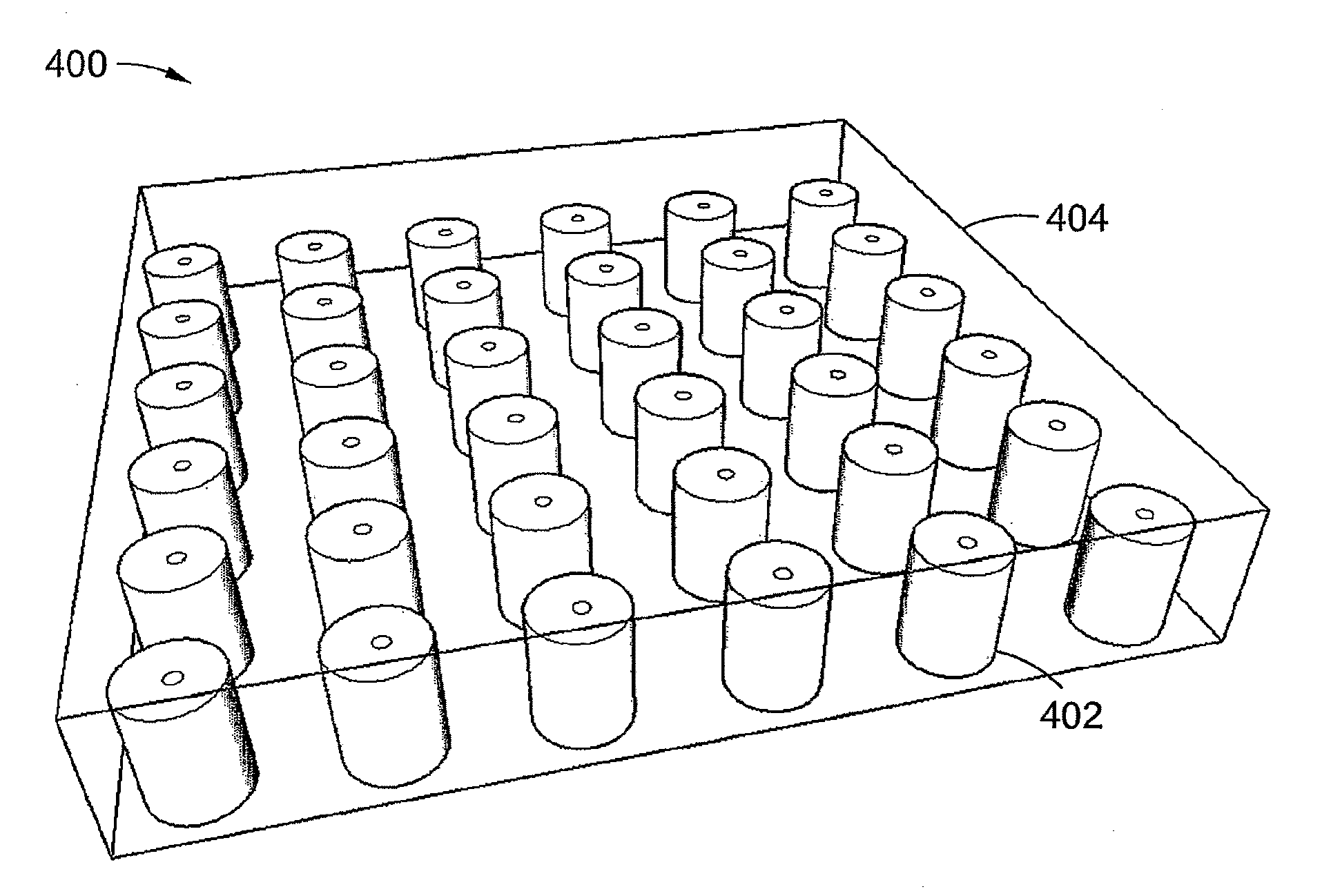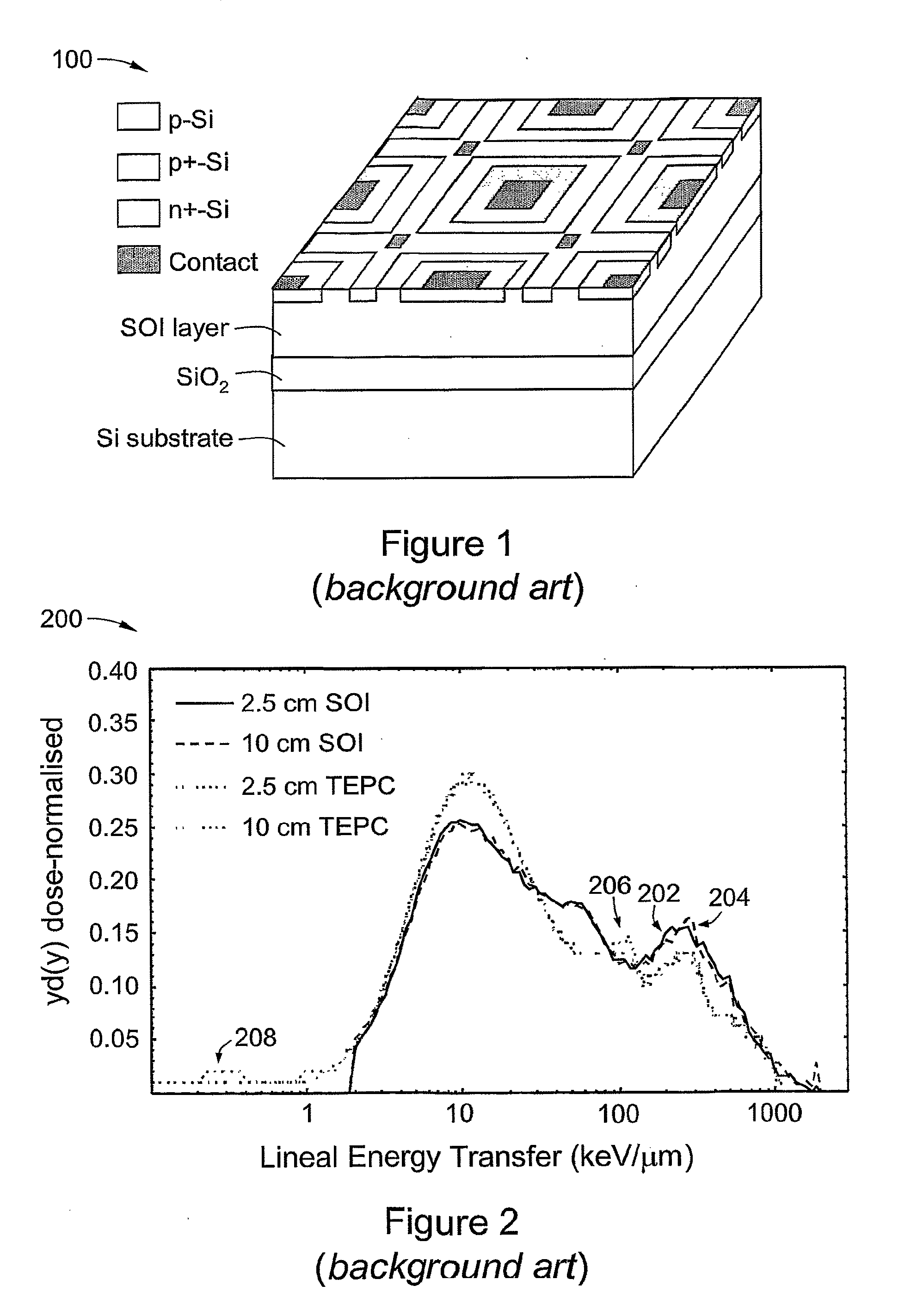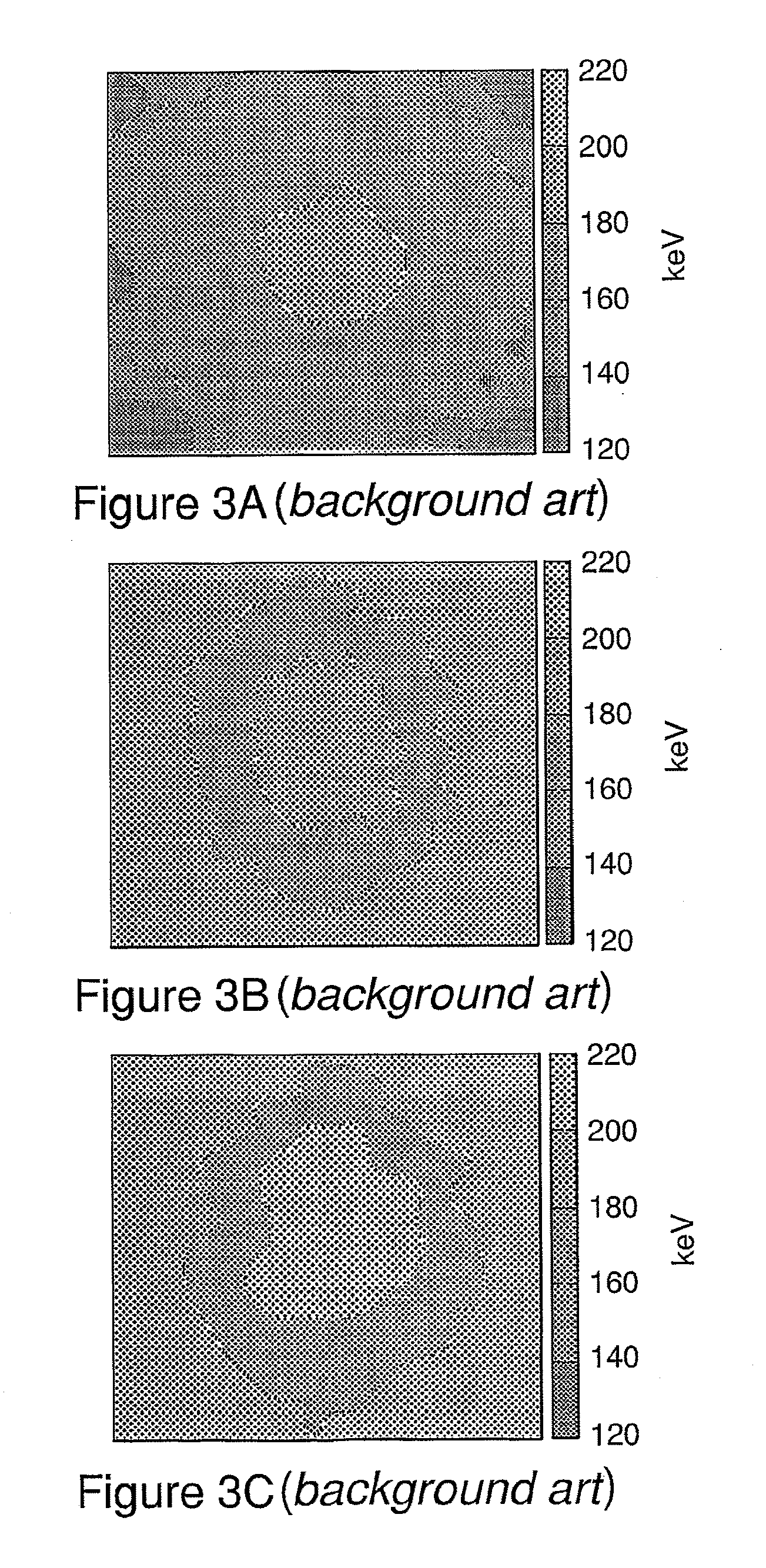Method and apparatus for tissue equivalent solid state microdosimetry
a solid state microdosimetry and tissue technology, applied in the direction of radiation intensity measurement, instruments, x/gamma/cosmic radiation measurement, etc., can solve the problem of limited correlation between the let approach and radiobiological effects, the delta ray energy distribution and its relationship to spatial dose distribution are not adequately considered, and cannot predict the radiobiological effects of biological tissue for all types of radiation
- Summary
- Abstract
- Description
- Claims
- Application Information
AI Technical Summary
Benefits of technology
Problems solved by technology
Method used
Image
Examples
example 1
[0125]Measurement of TE Microdosimetric Spectra on Pu—Be Gamma-Neutron Source.
[0126]The response of an SOI microdosimeter of the background art (cf. FIG. 1) in a mixed gamma / neutron field produced from a 238Pu—Be radioisotope neutron source was measured. The source was located in a general purpose neutron irradiation facility of floor area 7.5 m2; the facility was surrounded by walls 400 mm thick and 1.75 in high of borated paraffin and concrete. The source activity was 325 GBq with an estimated neutron emission rate of 2×107 neutrons in 4π. The average energy of fast neutrons was approximately 4 MeV with a maximum energy of about 10 MeV. The dominant gamma component was a 4.4 MeV emission associated with the decay of the bound excited state of 12C* produced in the Be(α,n) reaction within the 238Pu—Be source. The 5 μm thick SOI microdosimeter with 4800 planar parallel p-n junctions was mounted at a distance of approximately 2.6 cm from the source.
[0127]FIG. 9 is an example of a set ...
example 2
[0128]Measurements were made of dose equivalent of neutron contamination in a patient phantom produced during proton therapy.
[0129]The interaction of 250 MeV protons with beam modifying devices and the patient produces fast neutrons that are deposit the-energy dose in the patient and may be the cause of secondary cancer. Estimates were made of the equivalent neutron dose within the phantom outside the proton field using solid state microdosimeter and the steps of the data analysis method of the above embodiment.
[0130]FIG. 10 is a set of plots 1000 of TE microdosimetric spectra obtained from the MCA spectra with a background art 10 μm SOI microdosimeter comparable to that of FIG. 1 in a water phantom at different depths in the water phantom along the proton Bragg peak. Proton energy was 190 MeV; the range was 26 cm. For clarity, the individual spectra—according to data collection position—are labelled as follows:
[0131]1002 x=2.2 cm
[0132]1004: x=20 cm
[0133]1006: x=23.2 cm
[0134]1008: x...
PUM
 Login to View More
Login to View More Abstract
Description
Claims
Application Information
 Login to View More
Login to View More - R&D
- Intellectual Property
- Life Sciences
- Materials
- Tech Scout
- Unparalleled Data Quality
- Higher Quality Content
- 60% Fewer Hallucinations
Browse by: Latest US Patents, China's latest patents, Technical Efficacy Thesaurus, Application Domain, Technology Topic, Popular Technical Reports.
© 2025 PatSnap. All rights reserved.Legal|Privacy policy|Modern Slavery Act Transparency Statement|Sitemap|About US| Contact US: help@patsnap.com



